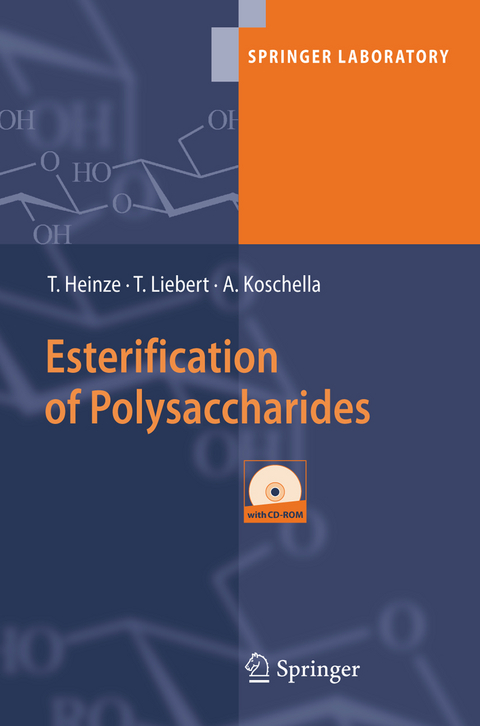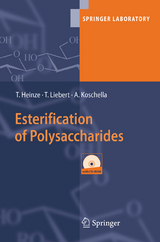Esterification of Polysaccharides
Springer Berlin
978-3-540-32103-3 (ISBN)
Polysaccharide esters (e.g. cellulose and starch) are among the first polymeric materials applied commercially. The way of producing these technically relevant derivatives, mainly the carboxylic acid esters of C2 to C4 acids, have not been changed significantly during their history of manufacture. The investigation of new acylation methods and strategies of analysis was revived during the last decade by the search for tailored, biocompatible material for specific fields of application, e.g., biotechnology, sensor technique and medicine. Unconventional solvents were developed for completely homogeneous acylation reaction applying state of the art techniques of modern organic chemistry for polysaccharide modification. This book will provide a first comprehensive summary of acylation methods in a very practical manner.
Detailed structure analysis is indispensable for the evaluation of structure-property-relationships. Spectroscopic methods in particular FTIR- and NMR spectroscopy including two dimensional methods are of increasing importance.
and Objectives.- Structure of Polysaccharides.- Analysis of Polysaccharide Structures.- Esters of Carboxylic Acids - Conventional Methods.- New Paths for the Introduction of Organic Ester Moieties.- Sulphonic Acid Esters.- Inorganic Polysaccharide Esters.- Structure Analysis of Polysaccharide Esters.- Polysaccharide Esters with Defined Functionalisation Pattern.- Selected Examples of New Applications.- Outlook.- Experimental Protocols.
From the reviews:
"It is inevitable that the increasing cost of petroleum-based products will result in polymers based on renewable resources becoming competitive. Among the naturally occuring polymers, polysaccharides are by far the most abundant, and a wide range of structural and functional types can be readily obtained. Formation of esters is a long-established approach to obtain polysaccharide derivatives with modified properties. New methods of preparation and, particularly, new methods for the evaluation of the results of modified procedures have resulted in a resurgence in interest in these materials. Applications of these new methods along with brief outlines of earlier work are summarized in this concise, easily readable book."..."The book is clearly written, but there are some typographical errors. The audience for this book will include polymer chemists and those interested in polysaccharides. Although the subject of the book has a long history, many of the references date from within the past 5 years. For the reader, it provides a concise summary of the structures and methods of characterization for the important polysaccharides and their esters as well as an outline of the advances that are being made in the preparation of new materials. The low cost and clear presentation will encourage personal purchase."
(T. Bruce Grindley, Journal of the American Chemical Society, Vol. 129 (7), 2007)
| Erscheint lt. Verlag | 14.6.2006 |
|---|---|
| Reihe/Serie | Springer Laboratory |
| Zusatzinfo | XV, 232 p. With CD-ROM. |
| Verlagsort | Berlin |
| Sprache | englisch |
| Maße | 155 x 235 mm |
| Gewicht | 550 g |
| Themenwelt | Naturwissenschaften ► Biologie ► Biochemie |
| Naturwissenschaften ► Chemie ► Organische Chemie | |
| Schlagworte | Biotechnology • characterization • Organic Chemistry • Polymer • Polysaccharid • Polysaccharide • Polysaccharide Esters • Properties and Application • Synthesis, New Paths |
| ISBN-10 | 3-540-32103-9 / 3540321039 |
| ISBN-13 | 978-3-540-32103-3 / 9783540321033 |
| Zustand | Neuware |
| Informationen gemäß Produktsicherheitsverordnung (GPSR) | |
| Haben Sie eine Frage zum Produkt? |

